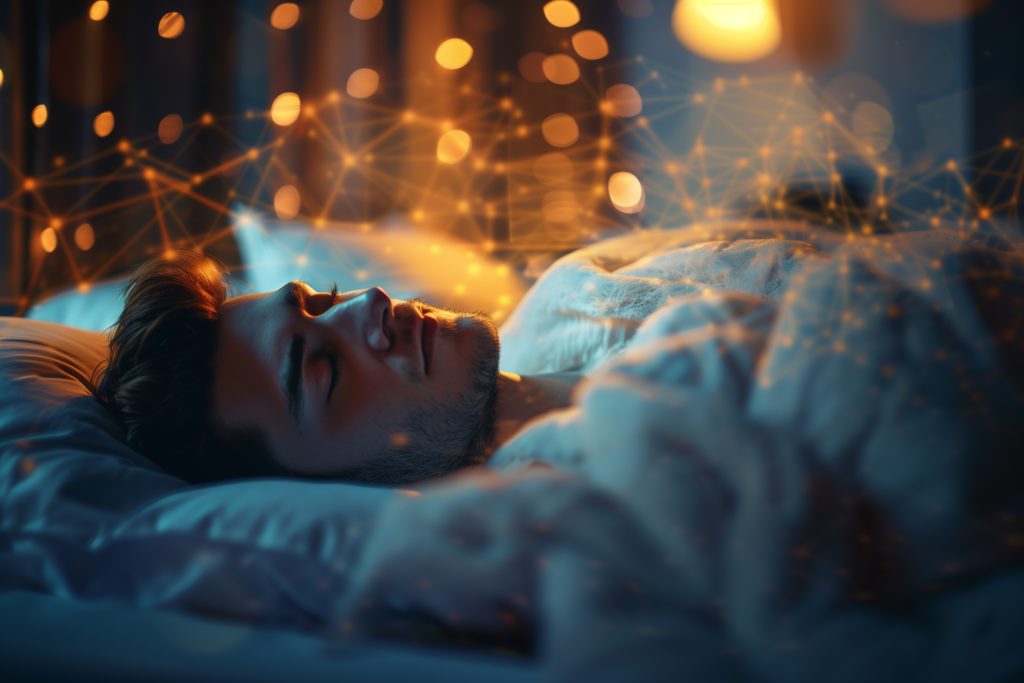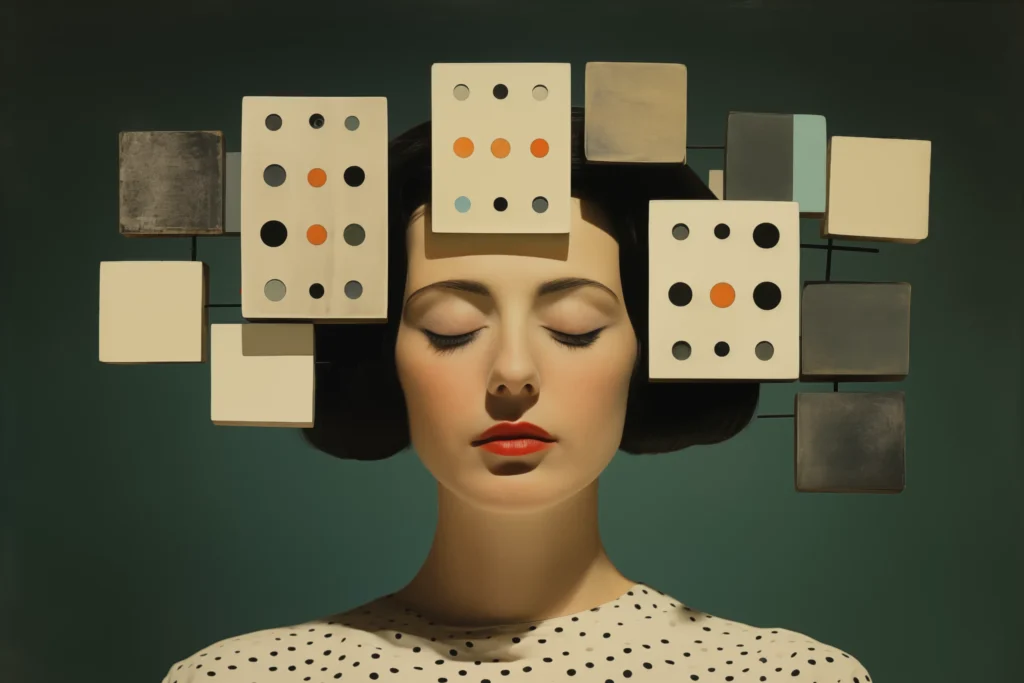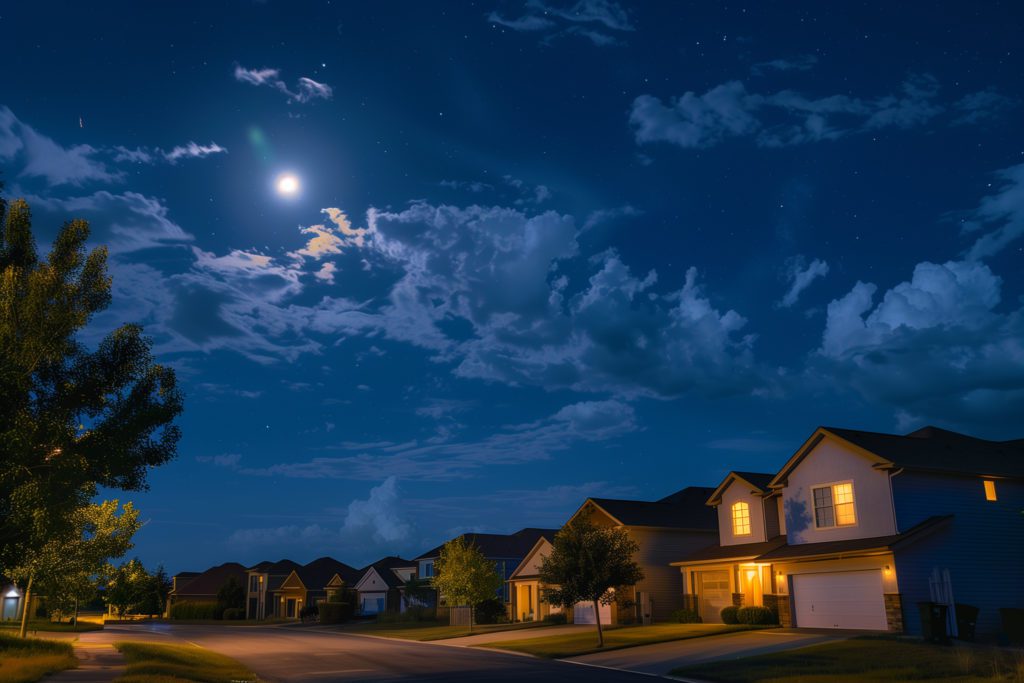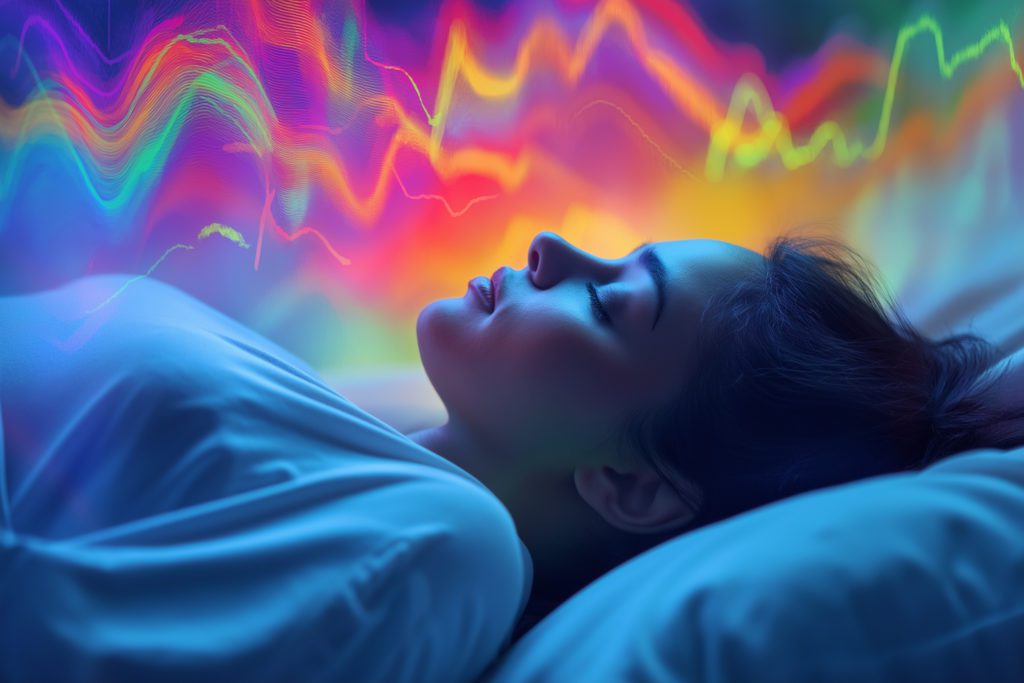
Understanding Light Sleep: Characteristics and Importance in the Sleep Cycle
What is light sleep? This type of sleep is very important in the sleep cycle. Understanding the characteristics of light sleep and its role in the sleep cycle.

Deep sleep isn’t the only type of sleep that you should pay attention to. Although it often isn’t given as much attention as REM sleep, light sleep is just as important when it comes to your overall wellness. This key stage of sleep plays a pivotal role in sleep health. Many essential functions take place during light sleep. Read on to learn more about this type of sleep and why you need it.
What is Light Sleep?
Each night while you sleep, your body goes through four stages of sleep. There are three non-rapid eye movement stages (NREM) — N1, N2, N3, and one rapid eye movement (REM) stage. Each stage of sleep supports important bodily functions. Your body cycles through these stages four to six times throughout the night.
Light sleep occurs during two stages of sleep — N1 and N2. These stages last for approximately 30 minutes in total. Stage 1 occurs when a person initially drifts off to sleep. This stage lasts from 1-7 minutes typically. During this stage, the eyes close and the body and brain begin to relax. You might experience some muscle twitching, as you fall asleep.
During stage N2, the body goes into a more subdued state. Breathing slows down, the muscles relax, and heart rate decreases. Brain waves also begin to slow in preparation for deep sleep. Initially, you spend about 25 minutes in this stage, but this amount increases as the night goes on.
It’s much easier to wake up during light sleep compared to the deeper stages. Small noises or quiet sounds are usually enough to wake most people from a light sleep. This is why a sleep mask and blackout curtains can be so beneficial when it comes to helping us stay asleep.
How Much Light Sleep Should You Get a Night?
There is no minimum requirement for light sleep. But, on average most people spend about 50 to 60 percent of their sleep time in light sleep. So, if the average adult, gets 7-9 hours of sleep a night, they spend between 3½ and 4½ hours in light sleep. The majority of that time is spent in stage N2. Stage N1 is short and lasts just a few minutes as you are falling asleep.
There are several factors that can influence how much light sleep a person gets. As people age, they spend more time in light sleep. Certain medications, such as benzodiazepines, can increase the amount of time spent in light sleep.
If you are a light sleeper, does it mean that you get more light sleep? No, being a light sleeper is different from being in a light stage of sleep. Being a light sleeper simply means that you wake up more easily in response to noises or light in the environment.
Why Do You Need Light Sleep?
Light sleep is important for many reasons. It helps meet your overall sleep needs and supports many functions.
- Prepares You For Deep Sleep: Light sleep helps your body relax and prepare for the deeper stages of sleep.
- Organizes Memories: During the N2 stage of light sleep, your brain has bursts or spindles of electrical activity. This activity helps your brain transfer information from short to long-term memory.
- Encodes Information: Sleep scientists also believe that your brain begins the process of encoding and storing information during light sleep.
- Boosts Creativity: Light sleep has been found to help foster creativity. One research study found that we may get a creativity boost during the N1 stage of sleep.
- Processes Emotions: Emotions are mainly processed during REM sleep. But, sleep stage N2 also plays a role in processing emotions.
- Strengthens Motor Skills: Studies have shown that light sleep helps to boost motor skills.
Is Light Sleep More Important Than Deep Sleep?
No, both types of sleep are equally important for your overall health. They just have different functions. You need to experience every stage of sleep to wake up feeling refreshed and well-rested.
What Sleep Disorders Affect Light Sleep?
There are several sleep disorders that occur during the light stages of sleep. These can affect the amount and quality of light sleep that you get.
- Bruxism: Sleep bruxism is a disorder in which a person involuntarily grinds or clenches their teeth during sleep. Most of the time, bruxism occurs during the light stages of sleep.
- Exploding Head Syndrome: This parasomnia occurs during stage N1 of sleep, during the transition from wakefulness to sleep. It is characterized by the perception of a loud noise and explosion in a person’s head. This disorder can cause a person to have difficulty falling asleep.
- Restless Leg Syndrome (RLS): This movement disorder causes uncomfortable sensations in the leg, which triggers movement. RLS occurs most often during N1 and N2 stages of sleep and can feature crawling and itching sensations that make it almost impossible to fall or stay asleep.
How Does Insomnia Impact Light Sleep?
Insomnia occurs primarily during stages N1 and N2 of light sleep. If you suffer from insomnia, then you likely aren’t getting enough light sleep. That is a bad thing since light sleep is such an important part of overall sleep health.
If you have trouble falling or staying asleep, various strategies may help you get more quality sleep:
- Establish relaxing sleep routines
- Practice relaxation techniques before bed to help manage stress
- Avoid caffeine, alcohol, and large meals close to bedtime
- Leave phones and other electronic devices outside your bedroom
- Use earplugs and a sleep mask to help eliminate distractions
- Use a sleep-tracking app like Pillow to determine how much overall sleep you are getting
Tracking Your Light Sleep
One way to better understand how much light sleep you are getting is to track your sleep stages. This can provide you with insight as to how much time you are spending in each stage of sleep. With the right data, you can identify patterns that might indicate sleep-related issues. Of course, you would want to talk to your doctor about any possible sleep problems.
FAQ
Is being a light sleeper the same as having more light sleep?
No, being a light sleeper refers to waking easily from external stimuli like noise, not increased time in light sleep stages. True light sleep is a physiological process that is part of a healthy sleep cycle and cannot be controlled consciously
Is light sleep more important than deep sleep?
Both light and deep sleep are essential for overall health, as each supports distinct functions. Light sleep aids in memory organization, creativity, and emotional processing, while deep sleep is crucial for physical repair and immune system health. Experiencing all sleep stages is necessary to feel refreshed and well-rested.
Is it bad if I only get light sleep?
Yes, mostly getting light sleep can negatively affect your health. Light sleep is important, but deep sleep and REM sleep are essential for physical recovery, memory consolidation, and emotional regulation. Chronic lack of deeper sleep stages can lead to fatigue, cognitive decline, and a weakened immune system.
Does age affect the amount of light sleep?
Yes, aging shifts sleep patterns, leading to more time in light sleep and less in deep sleep. This change results from reduced hormone production and sleep fragmentation,.
What role does light sleep play in creativity?
The N1 stage of light sleep enhances creativity, partly due to hypnagogic hallucinations, which allow abstract and innovative connections in the brain. Historical accounts suggest this state has been used by inventors and artists to fuel groundbreaking ideasI
How much light sleep is considered normal?
On average, adults spend 50–60% of their sleep cycle in light sleep, equal to 3.5–4.5 hours per night depending on total sleep. This stage prepares the body for deep and REM sleep, ensuring sufficient restoration and energy for the next day.
Can light sleep stages improve memory?
Yes, especially during the N2 stage of light sleep, when the brain consolidates short-term memories into long-term storage. This phase is critical for motor skill learning and overall cognitive performance. A lack of N2 sleep can significantly impair learning and retention.

Written by
Emily Mendez
Emily Mendez is a former therapist and mental health author. She is one of the leading voices in mental health. Emily's writing has appeared in eCounseling, SonderMind, and more. Emily is frequently interviewed by Healthline, Fatherly, INSIDER, Family Circle, and other national media for her advice and expert opinion on the latest mental health topics.
Download Pillow
Get help
Press & News
Legal
Connect
X (Twitter)
Company
Copyright © Neybox Digital Ltd.



